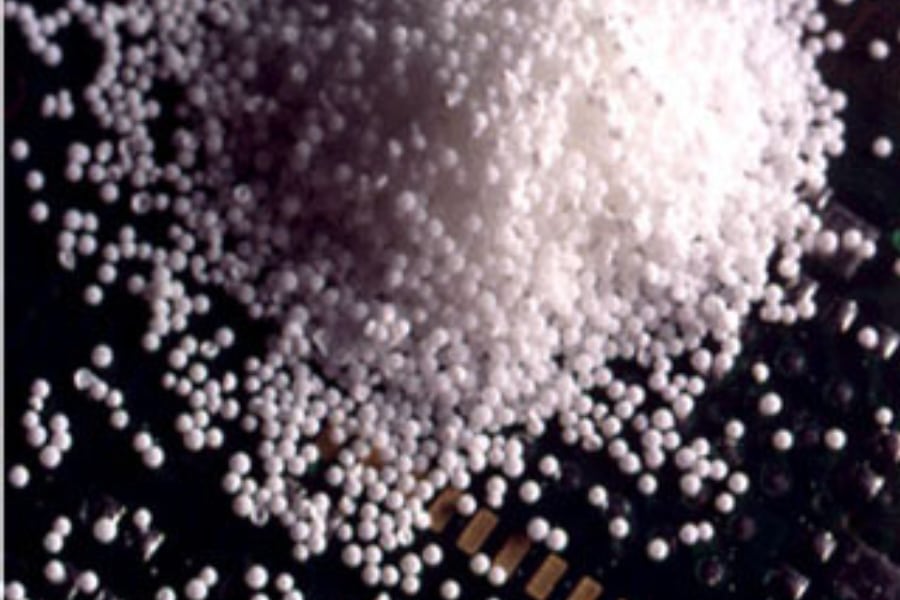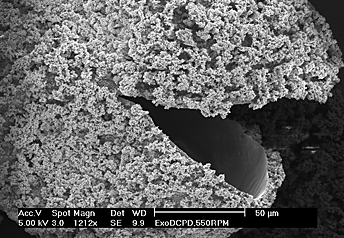Microcapsules
Creating self-healing materials that rely on a healing-agent requires some way to store and deliver the healing agent in the host material. The best way (so far) is to use microcapsules filled with the healing agent. The microcapsules need to integrate into the host material well, which means there are a lot of constraints on the properties of the microcapsule. For example:
- The healing agent should not easily diffuse through the microcapsules shell wall (we need the healing agent to stay in the microcapsule)
- The microcapsule wall material should not have cohesive properties (we need the microcapsules to not stick together when they come in contact)
- The microcapsule shell wall should be relatively tough (we don't want the microcapsules rupturing when mixing into the host material)
- The microcapsule shell wall should be stable (we don't want the microcapsules falling apart if we store them)
- The microcapsule wall material should deposit on interfaces in fluids (we need the shell wall material to form around droplets in aqueous solutions)
- The microcapsules should form either mechanical or chemical bonds with the host material (we need the microcapsules to rupture if a crack in the host occurs)
- The microcapsules should have a modulus less than the host material (cracks are attracted to soft inclusions in the host material, but repelled from hard inclusions)
- The microcapsules shell wall thickness should be thick enough to prevent leaking but as thin as possible to deliver the most healing agent for the size of the microcapsule

The formation of microcapsules occurs at the interface between an immiscible liquid in an aqueous solution. This means that we are dealing with surface chemistry which, in general if very sensitive to very small changes in procedures and even trace levels of contaminants can cause unexpected results. The picture below shows an example of free-flowing microcapsules.

We can evaluate microcapsules in more detail using a scanning electron microscope (SEM). This SEM micrograph shows a ruptured microcapsule. You can see the inside is relatively smooth with a very thin shell wall. On the outside of the microcapsule is rough texture created by additional shell material depositing on the outside surface. This rough texture can help the microcapsule adhere to the host material, causing the microcapsule to rupture when a crack moves through the host material. Depending on how the microcapsule is fabricated, the shell wall thickness and the roughness of the exterior can change.

Fabrication of microcapsules is done in an aqueous solution. The healing agent, which should be immiscible in water, is added to a water (in this case in a petri dish). The appropriate chemicals required to create the shell wall are added and the entire solution is stirred using an overhead stirrer. A specific temperature ramp is executed which initiates the reaction. The size of the microcapsules formed depends on the stirring rate of the mixer. Faster stirring results in smaller droplets of healing agent forming in the water, which after the shell material deposits at the interface will result in smaller microcapsules.

The size of the microcapsule is predominantly determined by the stir rate during the fabrication process. Faster stirring results in smaller droplets of healing agent and thus smaller microcapsules. Once the microcapsules are fabricated, they should be sifted for size and stored in a refrigerator or freezer to help prevent diffusion of the healing agent through the microcapsule shell wall. Once the microcapsules are embedded in a host material, diffusion of the healing agent is not much of a concern. The image shown here is a scanning electron microscope (SEM) image of the microcapsules. You can see that this batch had microcapsules around 200 micrometers in diameter.
